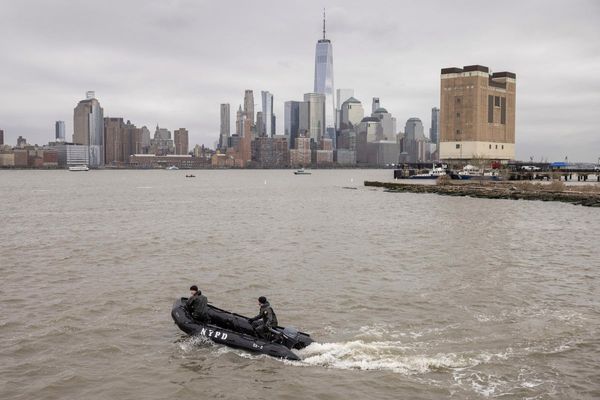
Asian governments breathed a sigh of relief as U.S. President Donald Trump decided to pause many of his reciprocal tariffs for 90 days, giving time for negotiations with many of the U.S.’s major trading partners—with one significant exception. Chinese goods now face a 125% tariff, after Trump hiked rates owing to Beijing’s “lack of respect.”
Japan’s Nikkei 225 rose 9.1% on Thursday after Trump’s tariff pause. South Korea’s KOSPI rose 6.6%, Taiwan’s Taiex index jumped by 9.3%, and Australia’s S&P/ASX 200 rose by 4.6%. Still, these indexes are below where they were before Trump’s “Liberation Day” announcement shocked governments, companies, and markets.
Chinese markets also rose slightly, despite the high tariffs against the world’s second-largest economy. Hong Kong’s Hang Seng Index rose by 2.1%, its third straight day of gains since its massive decline on Monday, the worst since 1997. The CSI 300 rose by 1.3%.
Southeast Asia, which got some of Trump’s highest “Liberation Day” tariffs, also rallied. Vietnam’s VN-Index rose by 6.8%, as the president’s pause eased fears that the export-reliant economy would get hit with a 46% tariff.
Tariffs aren’t over yet
Despite Trump’s last-minute decision, average U.S. tariff rates are still the highest they’ve been since the 1930s. In addition to the new 125% tariff on China, there’s also a universal 10% tariff on all U.S. imports, as well as 25% tariffs on imported cars, steel, and aluminum.
There’s also the looming threat of a 25% tariff on countries that use Venezuelan oil. In addition, the U.S. president has threatened tariffs on imported pharmaceuticals and semiconductors.
If Trump’s full “Liberation Day” tariffs had remained in place, the average U.S. tariff rate would have been 27%, according to estimates from Bloomberg. Trump’s pause brings that down to 24%—still far higher than the average 2% rate before the president took office for the second time.
Countries like South Korea, Japan, and Australia are still harmed by a more protectionist U.S., even if they do win a permanent reprieve from “reciprocal tariffs.” Japan and South Korea are major car exporters, while Australia sells steel to the U.S.
Trump’s tariff pause also confuses the messaging on what the tariffs are for. In the days since “Liberation Day,” Trump officials like Commerce Secretary Howard Lutnick and senior trade advisor Peter Navarro argued that tariffs were needed to bring manufacturing back to the U.S. and rebalance trade with exporting countries.
Yet post-pause, the Trump administration has switched arguments to suggest that the tariffs instead served as leverage to push for new trade deals with partners like Japan, Korea, and Vietnam, and to isolate China. In comments to reporters, Treasury Secretary Scott Bessent argued that Trump had successfully “goaded China into a bad position.”
What happens now?
Trump’s pause now sets off a three-month scramble by its trading partners to get agreements signed. Soon after the pause, Vietnam said it would start trade negotiations with the U.S., and would consider removing as many non-tariff barriers as possible. The island of Taiwan is also considering buying $200 billion worth of U.S. products, particularly liquefied natural gas, to help reduce its trade surplus.
Japan and South Korea are also in negotiations with the U.S. over Trump’s tariffs, in a bid to reduce both the reciprocal tariffs and the 25% tariff against imported cars.
The big question, however, is China. On Wednesday, Trump predicted that “China wants to make a deal,” and suggested that he wouldn’t raise tariffs on the country any further.
China’s 84% tariffs on U.S. goods, part of Beijing’s retaliatory measures against Trump’s so-called reciprocal tariffs, went into effect today.
“We are currently still on course for a disorderly economic decoupling between the world’s two largest economies, with no immediate signs of either [the] U.S. or China backing down,” Deutsche Bank wrote in a note on Thursday.
Chinese officials are meeting today in order to discuss further economic stimulus to buffer the economy against Trump’s tariff threats, including support for technology and consumer spending, Bloomberg reports.
On Thursday, Goldman Sachs cut its 2025 GDP growth forecast for China to 4.0%, down from 4.5%, and estimated that up to 20 million workers might be affected by a drop in U.S.-bound exports. Trump’s tariffs, falling exports to the U.S., and slowing global growth could generate “substantial pressure on the Chinese economy and labor market,” the bank’s economists wrote.







